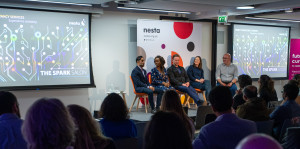The desire to do good and leave a positive legacy is not new; acts of philanthropy and charitable giving have taken place for thousands of years.
And for many businesses today, being involved in community projects is now part of a firm commitment toward being good corporate citizens.
As a result, there are strategies, plans, people and resources available to ensure these corporate social responsibility (CSR) initiatives hit their targets. And as with any other business initiative, it is important the time and resources set aside for these activities are used in the most effective way possible.
This is not just because of a desire to be frugal – but also to ensure the greatest possible impact is achieved.
First things first
The first step toward improving something is often to start measuring it. Big data can be an invaluable source of help here, and the sooner it is factored into a project the more effective it can be.
Understanding what constitutes a successful outcome is important from the start, and those best placed to tell you what that looks like are the people the scheme will be helping.
Some projects are focused on delivering a single objective within a set timeframe – a high-impact intervention such as building school toilets for girls, for example.
Measurement criteria could include the number of girls attending school year-on-year, or whether toilet usage among girls has increased to meet recommended health guidelines. By knowing those criteria in advance, you can ask the right questions and gather the right data.
Other ventures will be more complex and have longer-term, incremental goals.
One such project that Tata Consultancy Services (TCS) has been involved in, is reducing instances of Sudden Infant Death Syndrome (SIDS).
John Kahan, President of the Aaron Matthew SIDS Research Guild of Seattle Children’s Hospital and also Chief Data Analytics Officer, Microsoft, AI for Good, has a very personal and professional connection to the fight against SIDS. His son, Aaron Matthew Kahan, succumbed to SIDS just days after he was born in 2003.
Kahan’s work is now helping harmonize the huge amounts of SIDS-related data collected by relevant authorities. Mr Kahan describes this as the first step toward developing “a genomic database without human bias to further help us understand the challenges with less human judgment, while machine learning will give us better understanding of what is really happening with these children.”
TCS has been providing support from a technology perspective and insight regarding data analytics.
And the project is featured in Tata Analytics’ Parivartana report, which takes a deep dive into the role of data and analytics in social transformation.
A world of data
Before even embarking on a project like that, or even a much smaller one, it is vital to have an understanding of the potential complications the data might throw at you. Otherwise your results may prove unreliable. If just one member of your CSR team has experience of working with data analytics, they can put the right measurement framework in place and train the rest of the team to apply the analytics effectively.
Satellite images, sensors, social networking sites, mobile devices, and the internet all produce vast amounts of, often completely unstructured, data. It might be from browsing or online shopping, comments left on websites or chat forums, or videos people have shared – all the result of our increased interaction with smart devices and online services.
It’s a lot of information. And if you’re looking to make sense of it all, you need to know the right questions to ask.
When it comes to using data in CSR, employing analytics is the fast track to ensuring you can help make a difference without compromising your business or its resources.
Interrogating the available data effectively will make it much easier to establish how successful your activities are likely to be. And their impact will be recorded accurately, too.
Many public-private partnerships are working on a range of CSR-related projects based around using big data.
For example, non-profit DataKind brings together data scientists and organizations working to help communities and society. Some of its programmes include digging into data to help people out of homelessness in the UK, working to reduce traffic-related deaths and injuries in the US, forecasting water demand in California, and boosting financial inclusion in Senegal with the help of predictive modelling.
Using data analytics to deliver CSR projects more effectively means organizations can start pushing boundaries and measuring the impact of their campaigns with the right metrics.
The key is to make sure data analysis is designed into a programme from the start, and embedded throughout its lifecycle. Then any changes that are needed along the way can be made.
Getting it right will bring benefits to your business – but it could also help make a real difference to the world.
This article is inspired by the work of Jashodhara Chakraborti, Managing Consultant at Kolkata Network Foundation and Consultant, Bharatiya Bhasha Parishad as well as that of Dr. Neha Sharma, Secretary of Society for Data Science, India, as highlighted in the Tata Consultancy Services Parivartana report on the Role of Data and Analytics in Social Transformation. The report showcases how a diverse set of highly motivated experts including CxOs, industry leaders, economists, academicians, researchers, social entrepreneurs, philanthropists have made a positive, and sustainable impact to the community. You can read more about this work here https://www.tcs.com/a-n-i-parivartana

